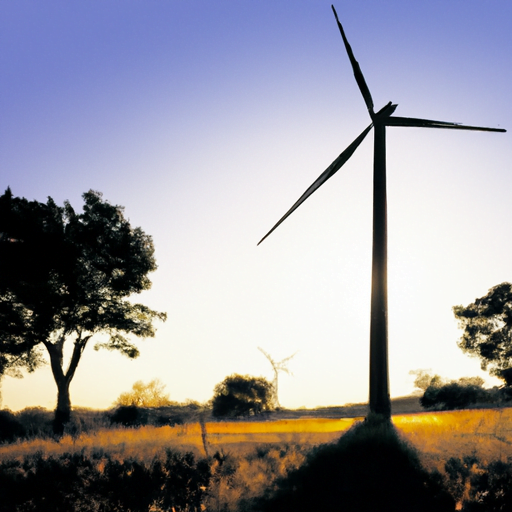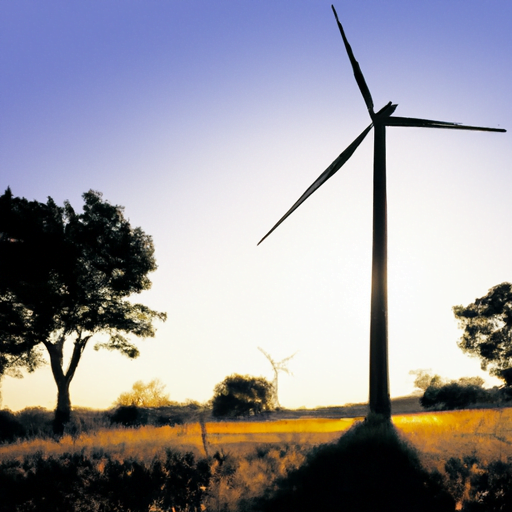Have you ever thought about what it would be like to live off the grid? You know, just disconnecting from the hustle and bustle of city life and embracing a simpler, more self-sufficient lifestyle. It sounds pretty amazing, doesn’t it? But here’s the thing, when most people hear the term “off-grid living,” they often assume it means completely disconnecting from all modern amenities, including electricity. Well, I’m here to tell you that’s not necessarily true. In fact, there are plenty of options available for generating and storing your own electricity, allowing you to live comfortably and sustainably off the grid.
Let’s dive into the topic of electricity options in off-grid living. Living off the grid doesn’t mean you have to give up all the conveniences that electricity provides. There are actually numerous ways to generate your own power. Solar panels, for example, are a popular choice for off-grid living. They harness the sun’s energy and convert it into electricity, providing a reliable and renewable source of power. You can also consider wind turbines, hydroelectric systems, or even a combination of these options depending on your location and resources.
In addition to generating your own power, it’s important to consider how you’ll store that energy for use during non-sunny or non-windy days. This is where batteries come into play. By installing a battery bank, you can store excess energy produced by your solar panels or wind turbines and use it when needed. This ensures a consistent supply of electricity even when natural resources are limited. Of course, there are pros and cons to each type of battery, so it’s worth doing some research to find the best option for your specific needs.
So, living off the grid doesn’t have to mean living in the dark ages. With the advancements in renewable energy technologies, you can enjoy all the comforts of modern life while reducing your environmental footprint. In the upcoming article, we’ll dive deeper into the different electricity options available for off-grid living, discussing their benefits, drawbacks, and how to determine the right solution for you. Stay tuned for more in-depth information on this exciting topic! Living off the grid used to be associated with a complete lack of access to electricity. However, advancements in technology and a growing awareness of sustainable living have made it possible to generate and store electricity even in remote areas. In this article, we will explore the different options for generating and storing electricity in off-grid living situations.
Understanding Off-Grid Living
Off-grid living refers to a lifestyle where individuals or communities are not connected to the main power grid. This means that they are responsible for generating their own electricity and meeting their energy needs independently. Off-grid living can be a choice for those seeking self-sufficiency or a necessity for those residing in remote areas where connecting to the grid is not feasible.
The Importance of Electricity in Off-Grid Living
Electricity plays a crucial role in off-grid living by providing power for lighting, heating, cooking, refrigeration, and powering various appliances. It is essential for maintaining a comfortable living environment and carrying out daily activities. In many cases, electricity is also needed for running businesses or operating critical medical equipment.
Generating Electricity
There are several ways to generate electricity in off-grid living situations. Let’s explore some of the most popular options:
Solar power is one of the cleanest and most reliable sources of energy in off-grid living. By harnessing the power of the sun, solar panels can convert sunlight into electricity. These panels are typically installed on rooftops or in open spaces with direct exposure to sunlight. As long as there is daylight, solar panels can generate electricity, making them a great option for off-grid living.
Wind Power
Wind power is another renewable energy source that can be utilized in off-grid living. Wind turbines, ranging from small-scale to large-scale, convert the kinetic energy of the wind into electricity. Wind turbines require open and windy spaces for optimal performance. They can be particularly effective in areas with consistent wind patterns.
Hydro Power
If you have access to a flowing water source such as a river or a stream, hydro power can be an excellent option for generating electricity off-grid. Small-scale hydro systems can be installed to harness the energy of moving water, converting it into electrical energy. Hydro power systems require careful planning and consideration of the environmental impact, but they can provide a consistent and reliable source of electricity.
Energy Storage
In off-grid living, it is crucial to have a reliable energy storage system. This allows you to store excess energy generated during times of high production and use it when there is low or no production. Here are some common energy storage options:
Battery Storage Systems
Battery storage systems are a popular choice for off-grid living. They store excess electricity generated by solar panels, wind turbines, or other sources and release it when needed. These systems typically use deep-cycle batteries designed for continuous charging and discharging. Battery storage systems can provide uninterrupted power supply, even during periods of low or no energy generation.
Flywheel Energy Storage
Flywheel energy storage systems use a spinning rotor to store kinetic energy. When electricity is needed, the rotor’s energy is converted back into electrical energy. Flywheel systems can provide rapid response times and high power output, making them suitable for applications requiring short bursts of energy.
Pumped Hydro Energy Storage
Pumped hydro energy storage is a more complex and large-scale option for off-grid living. It involves using excess electricity to pump water uphill into a reservoir. When electricity is needed, the water is released downhill, passing through turbines that generate electricity. Pumped hydro storage systems are highly efficient and can store vast amounts of energy for extended periods.
Electrical Appliances and Systems
In off-grid living, it is important to choose electrical appliances and systems that are compatible with renewable energy sources. Here are some considerations:
Powering Essential Appliances
Identify the essential appliances that you need to power and choose energy-efficient models. This could include refrigerators, stoves, lighting fixtures, and communication devices. It is important to calculate the power requirements of these appliances to ensure that your energy generation and storage systems can meet the demand.
Renewable Energy Systems for Off-Grid Living
Consider installing renewable energy systems specifically designed for off-grid living. These systems can include solar water heaters, solar-powered air conditioning, and even composting toilets. By utilizing renewable energy systems, you can reduce your reliance on traditional energy sources and become more self-sufficient.
Strategies for Energy Efficiency
In off-grid living, maximizing energy efficiency is crucial to ensure that your electricity generation and storage systems are used effectively. Here are some strategies to consider:
Using Energy-Efficient Appliances
Invest in energy-efficient appliances that have a lower power consumption. Look for appliances with energy star ratings, which indicate higher energy efficiency. LED lighting is also a great choice as it uses significantly less power compared to traditional light bulbs.
Insulation and Weatherization
Proper insulation and weatherization can significantly reduce energy losses and improve the efficiency of heating and cooling systems. Ensure that your home or building is well-insulated and sealed to minimize drafts and heat transfer.
Smart Home Technology
Implementing smart home technology can help optimize energy usage and increase energy efficiency. Smart thermostats, for example, can automatically adjust heating and cooling settings based on occupancy, reducing energy waste. Smart power strips can also be used to control and monitor the power consumption of various devices.
Financial Considerations
Off-grid living comes with its own financial considerations. While the initial setup costs for generating and storing electricity may seem high, they can often be offset by long-term savings. Here are some financial considerations to keep in mind:
Cost Analysis
Before embarking on an off-grid living journey, carefully analyze the costs involved in setting up and maintaining the required energy systems. Consider factors such as the cost of equipment, installation, maintenance, and future upgrades. Compare these costs with the potential savings you can achieve by generating your own electricity.
Government Incentives and Rebates
Check for any government incentives, grants, or rebates available for renewable energy systems. Many governments and local authorities offer financial support to encourage the adoption of clean energy sources. Take advantage of these opportunities to reduce upfront costs and speed up the return on investment.
Environmental Impact
One of the main reasons people choose off-grid living is to reduce their environmental impact. By generating electricity from renewable sources, off-grid living can significantly lower carbon emissions and preserve natural resources. Here are some ways to minimize your environmental footprint:
Reducing Carbon Footprint
Generating electricity from renewable sources produces little to no carbon emissions. By relying on solar, wind, or hydro power, you can greatly reduce your carbon footprint compared to traditional energy sources such as fossil fuels.
Preserving Natural Resources
Off-grid living promotes the conservation of natural resources by minimizing reliance on centralized power grids and the extraction of fossil fuels. By generating electricity from renewable sources, you contribute to the preservation of natural environments and reduce the demand for non-renewable resources.
Maintenance and Repairs
Maintaining and repairing off-grid electricity systems requires a certain level of knowledge and skill. Here are some considerations:
Diagnosing Electrical Issues
Having a basic understanding of electrical systems can help you diagnose and troubleshoot any issues that may arise. Regular inspections and maintenance can also help identify potential problems before they escalate.
Troubleshooting and Repairing Systems
In off-grid living situations, you may need to be self-sufficient when it comes to troubleshooting and repairing electrical systems. Familiarize yourself with the operation and maintenance of your specific energy systems and have the necessary tools and replacement parts on hand.
Community and Support
Joining off-grid communities and accessing online resources and support groups can be immensely helpful in navigating the challenges and opportunities of off-grid living. Here are some ways to find community and support:
Joining Off-Grid Communities
Connect with like-minded individuals by joining off-grid communities or attending gatherings and events focused on sustainable living. Networking with others who have experience in off-grid living can provide valuable insights and support.
Online Resources and Support Groups
Utilize online resources, forums, and support groups dedicated to off-grid living. These platforms are a great place to seek advice, share experiences, and find answers to specific questions or challenges.
Conclusion
Living off the grid no longer means living without electricity. With advancements in renewable energy technologies and energy storage systems, generating and storing electricity in off-grid living situations has become more accessible and sustainable than ever before. By exploring the different options for generating electricity, considering energy storage solutions, and implementing strategies for energy efficiency, you can embrace a sustainable off-grid lifestyle while maintaining the comforts and conveniences of modern living. Take control of your energy needs, reduce your carbon footprint, and join the growing community of off-grid enthusiasts who are making a positive impact on the environment.





